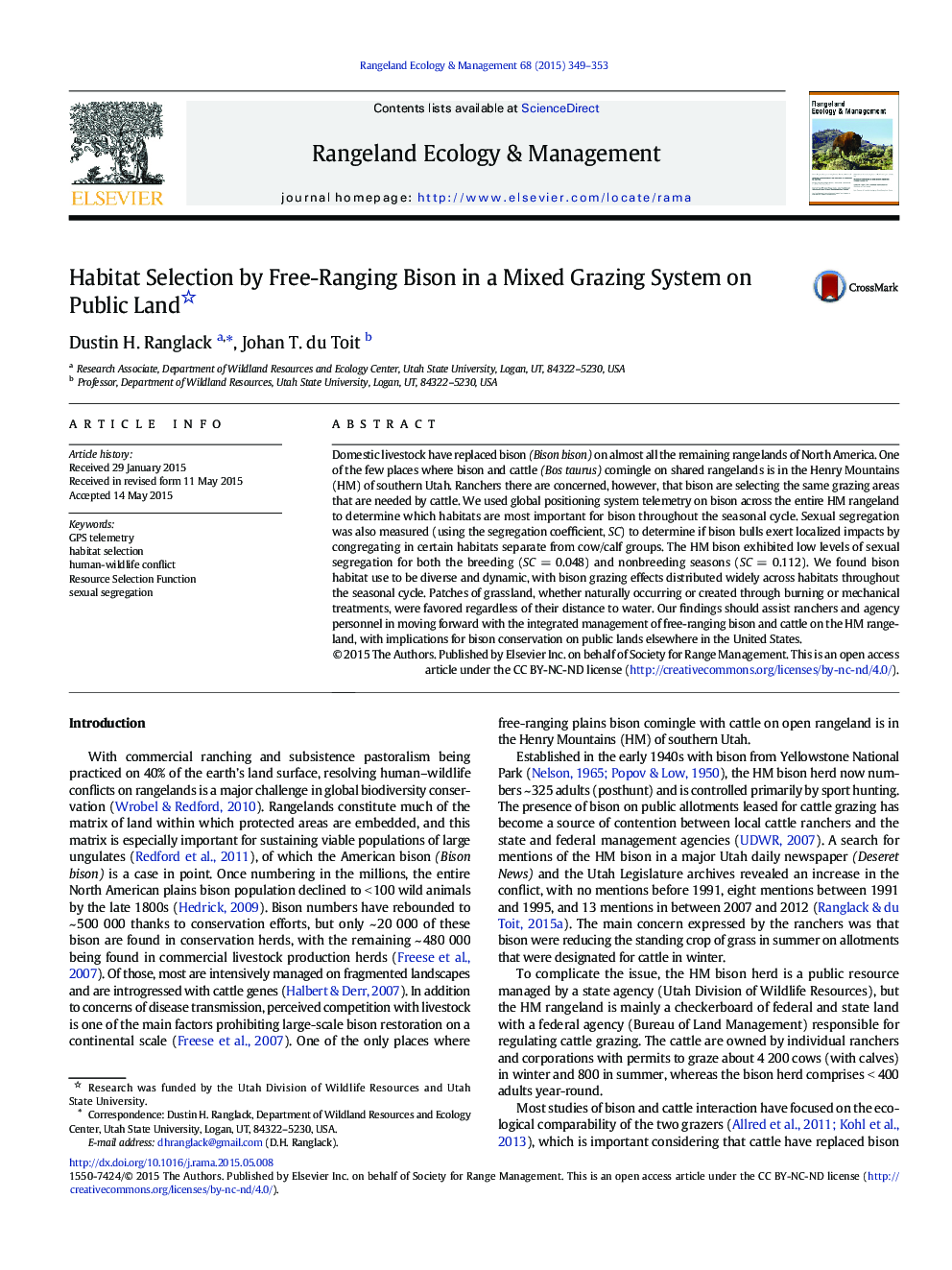| Article ID | Journal | Published Year | Pages | File Type |
|---|---|---|---|---|
| 6305758 | Rangeland Ecology & Management | 2015 | 5 Pages |
Abstract
Domestic livestock have replaced bison (Bison bison) on almost all the remaining rangelands of North America. One of the few places where bison and cattle (Bos taurus) comingle on shared rangelands is in the Henry Mountains (HM) of southern Utah. Ranchers there are concerned, however, that bison are selecting the same grazing areas that are needed by cattle. We used global positioning system telemetry on bison across the entire HM rangeland to determine which habitats are most important for bison throughout the seasonal cycle. Sexual segregation was also measured (using the segregation coefficient, SC) to determine if bison bulls exert localized impacts by congregating in certain habitats separate from cow/calf groups. The HM bison exhibited low levels of sexual segregation for both the breeding (SC = 0.048) and nonbreeding seasons (SC = 0.112). We found bison habitat use to be diverse and dynamic, with bison grazing effects distributed widely across habitats throughout the seasonal cycle. Patches of grassland, whether naturally occurring or created through burning or mechanical treatments, were favored regardless of their distance to water. Our findings should assist ranchers and agency personnel in moving forward with the integrated management of free-ranging bison and cattle on the HM rangeland, with implications for bison conservation on public lands elsewhere in the United States.
Keywords
Related Topics
Life Sciences
Agricultural and Biological Sciences
Agricultural and Biological Sciences (General)
Authors
Dustin H. Ranglack, Johan T. du Toit,
